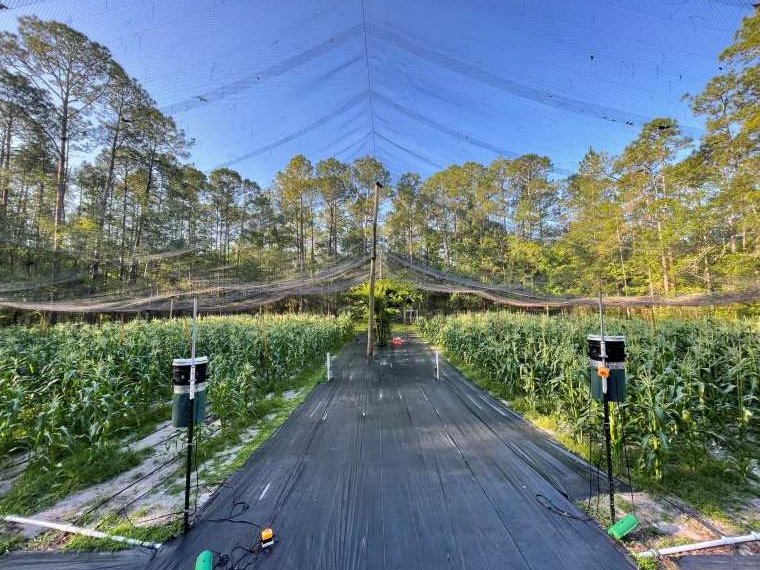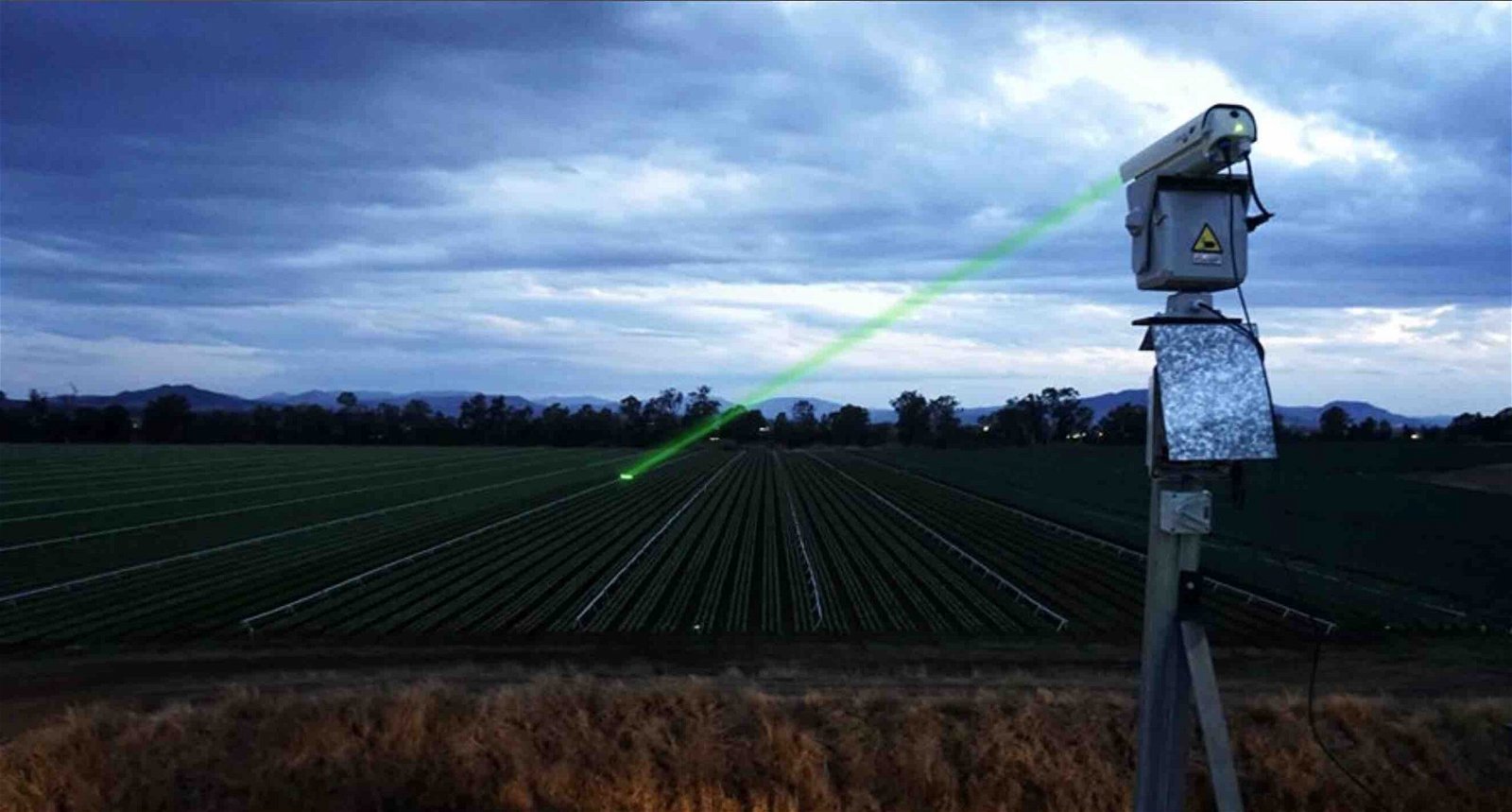Scientists have created a new weapon for fighting crop-damaging birds: a technology they are calling ‘Laser Scarecrows.’
Unlike conventional methods for protecting crops from invasive birds, this high-tech, non-lethal option is highly effective and less expensive than current options.
How Do Laser Scarecrows Work?
When protecting crops against invasive birds, farmers often resort to expensive and cumbersome techniques. These include systems that employ loud bangs or other noises to chase birds away, as well as manned patrols that use dogs and other methods to keep the crops free of crows. Unfortunately, the first method is disruptive to locals living near the farm, who can hear the loud bangs numerous times a day, while the manned patrols are labor and cost-intensive, dramatically reducing their value.
In some cases, farmers resort to lethal options like poisons. But those options can have significant consequences for the soil and local environment as well.
Hoping to offer a better option, scientists from the University of Florida and the University of Rhode Island zeroed in on the idea of laser scarecrows. They hoped that laser systems placed strategically around the vulnerable crops could disrupt the birds enough to cause them to abandon the field altogether.


“Growers need big effects for affordable prices,” explained Kathryn Sieving, Professor of Wildlife Ecology and Conservation at the University of Florida and one of the authors of the study outlining their plans for using laser scarecrows. “If they can spend $300-$500 each for lasers to protect large fields for 1-3 weeks instead of more expensive options such as hiring people to patrol with dogs, falcons, or rifles, then lasers would be beneficial.”
Tests Prove Lasers Are Highly Effective at Deterring Crows
To test their proposed system, Sieving’s team selected sweet corn as their target crop due to its short ripening time. Farmers call this the ‘vulnerability window,’ and with sweet corn, that window is only a few days out of each growing cycle.
“Birds only attack sweet corn during the brief ripening phase (called the milking stage), and it lasts only 5-10 days,” Sieving explained. “So, as soon as it ripens, harvest begins. Therefore, in sweet corn, the protection does not need to last very long.”
That is critical, they explain since repeated exposure over weeks or months could cause the birds to become desensitized to the laser scarecrows and ignore them altogether.
Next, the team created two artificial fields of corn. The ‘stick field’ involved ears of ripening corn attached to sticks and laid out at varying distances from the laser, while the ‘natural field’ involved actual corn stalks grown from seed in a flight pen.
Finally, laser scarecrows and control treatments were used on alternating days over a five-day period, allowing the researchers to “assess the birds’ response to repeated laser exposure.”
“We designed the stick trials to increase the sample size for more robust results,” said Sieving. “Natural corn matures over several weeks but then is only attractive to birds for two weeks – so our planted crop was not going to give us enough sample size. With the stick corn experiments, we could study small-scale effects and amp up the sample sizes.”
As hoped, the lasers did the trick, chasing birds away with a coverage range of up to about 20 meters.
“(The) lasers seem to be working well – surprising birds such that they leave fields with lasers, and this reduces damage during milking stages by far more than 20%,” Sieving said.
One interesting result was the discrepancy between the natural trials and the stick trials, as the stick trials were much less effective at deterring the birds than the natural trials. Sieving guessed that the main difference came down to the sturdiness of the stick as opposed to the flimsier corn stalks the birds would actually encounter in a farm setting.
“The sticks we presented corn on were sturdy, and the birds likely could perch and feed on corn while avoiding the laser layer sometimes,” the professor explained. “Natural corn stalks are flimsy, though, and the birds would be bouncing in and out of the laser layer with no control. Thus, just as in larger fields, it seems that natural corn makes lasers quite effective.”
Lasers Could Offer a Cost-Effective and Sustainable Solution to a Millennia-Old Problem
While large companies work to develop genetically modified crops designed to resist smaller pests like insects, mold, and fungus, the problem of birds eating ripe, healthy crops has yet to find a similar 21st-century solution.
Now, with the development of laser scarecrows, scientists may have finally discovered a way to use modern technology to treat this ancient problem without damaging crops or soil while also saving money.
“In open fields, birds will simply leave a field that has detectable laser protection, and they fly far out of its influence,” said Sieving. “It seems that just one laser per field can often do the trick to keep birds mostly out of a field.”
So, while scarecrows may still need to see the Wizard if they want to get a brain, it sounds like their lasers are already on the way.
Christopher Plain is a Science Fiction and Fantasy novelist and Head Science Writer at The Debrief. Follow and connect with him on X, learn about his books at plainfiction.com, or email him directly at christopher@thedebrief.org.

